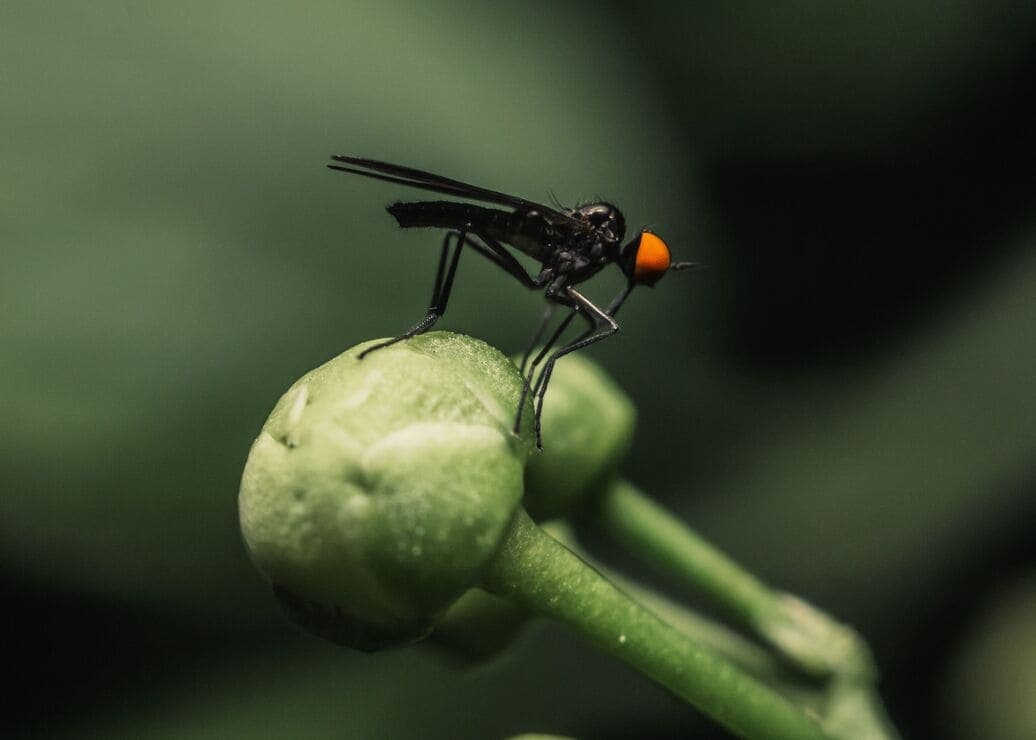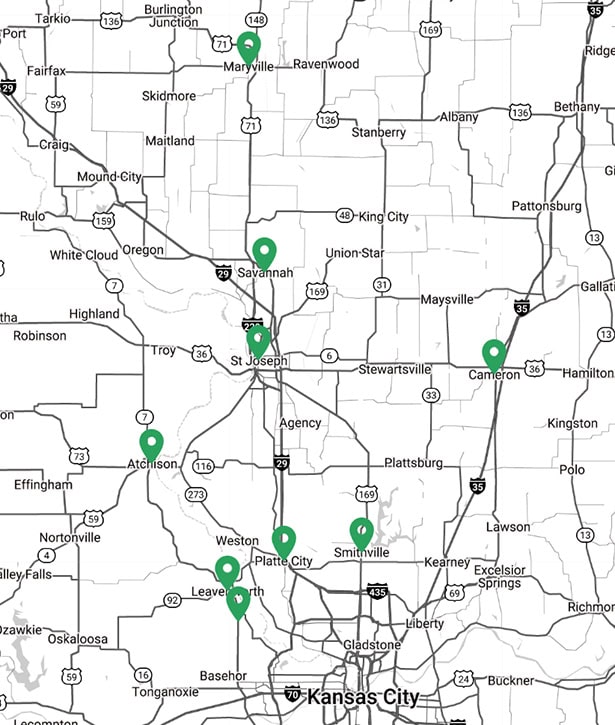
Fungus gnats are small flies that infest soil, potting mix, other container media, and other sources of organic decomposition. Their larvae primarily feed on fungi and organic matter in soil, but also chew roots and can be a problem in greenhouses, nurseries, potted plants and interior plantscapes.
Fungus gnats are dark, delicate-looking flies similar in appearance to mosquitoes. Adult fungus gnats have slender legs with segmented antennae that are longer than their head. Their long antennae distinguish them from the more robust short flies. Although a few species are up to 1⁄2 inch long, fungus gnat adults commonly are about 1⁄16 to 1⁄8 inch long. Wings are light gray to clear, and some species have a Y-shaped wing vein.
Because adult fungus gnats are attracted to light, you first might notice these pests flying near windows indoors. However, in comparison with the common housefly, fungus gnats are relatively weak fliers and usually don’t move around much indoors. Fungus gnats often remain near potted plants, growing media, foliage, compost, and wet mulch piles.
Females lay tiny eggs in moist organic debris or potting soil. Larvae have a shiny black head and an elongated, whitish-to-clear, legless body. They eat organic mulch, leaf mold, grass clippings, compost, root hairs, and fungi. If conditions are especially moist and fungus gnats are abundant, larvae can leave slime trails on the surface of media.
Adult fungus gnats don’t damage plants or bite people; their presence is primarily considered a nuisance. Larvae, however, when present in large numbers, can damage roots and stunt plant growth, particularly in seedlings and young plants. Significant root damage and even plant death have been observed in interior plantscapes and in houseplants when high populations were associated with moist, organically-rich soil.
Fungus gnats develop through four stages—egg, larva, pupa, and adult. The tiny eggs and oblong pupae occur in damp organic media where females lay eggs and larvae feed. At 75°F, eggs hatch in about 3 days, the larvae take approximately 10 days to develop into pupae, and about 4 days later the adults emerge. An entire generation of fungus gnats can be produced in about 17 days depending upon temperature. The warmer it is, the faster they will develop and the more generations will be produced in a year.
If you have infested plants, don’t move them to new areas where flies can emerge to infest other pots. In home situations where fungus gnat adults are a nuisance, it may be possible to reduce the problem by using sticky traps. Insecticides are rarely warranted to control these flies in and around homes. However, if you do apply an insecticide for fungus gnats, consider using pyrethrins or a pyrethroid insecticide for temporary but fast-acting control. Spray the surface of potting soil and plant parts where adults typically rest. Be sure the product is labeled for your particular use (e.g., for “house plants”) and read and follow the product’s directions. A synergist (such as piperonyl butoxide, or PBO) may increase pyrethrum effectiveness. Suggested PCO Products include Tempo SC Ultra, Onslaught, Pro-Control Fogger, 565 PlusXLO, Temprid SC, etc.
Locally owned, and family operated, committed to the St. Joseph Missouri community for over 50 years
Our certified and extensively train technicians ensure effective, safe pest management
Over five decades of proven Pest Control experience and unparalleled customer satisfaction.
Custom pest management plans tailored to your specific needs for effective, targeted results.
Guaranteed pest control solutions that ensure lasting results in peace of mind
If you don’t see your city on the map, that doesn’t mean we can’t service your area. Please contact us if you have any questions.
Call Us Today
Learn more about our Community Center

14375 US-71, Savannah, MO 64485